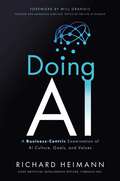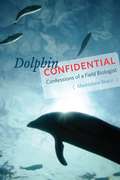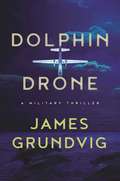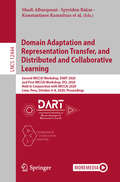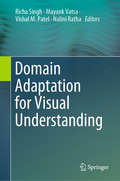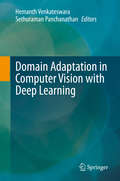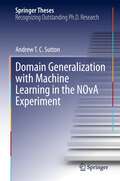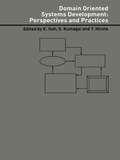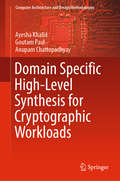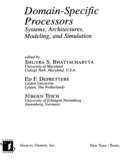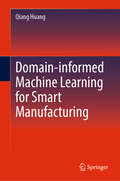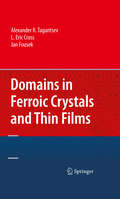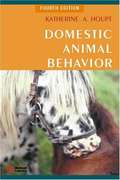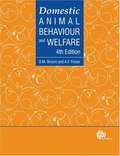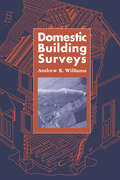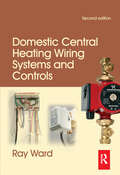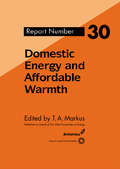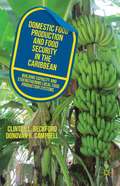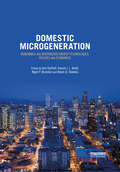- Table View
- List View
Dogtown (A Dogtown Book #1)
by Katherine Applegate Gennifer Choldenko Wallace WestFrom beloved authors Katherine Applegate and Gennifer Choldenko and with illustrations from Wallace West, Dogtown is at once an uplifting story and a page-turning adventure, sure to find a forever home in readers’ hearts. <p><p>Dogtown is a shelter for stray dogs, misbehaving dogs, and discarded robot dogs, whose owners have outgrown them. <p><p>Chance, a real dog, has been in Dogtown since her owners unwittingly left her with irresponsible dog-sitters who skipped town. <p><p>Metal Head is a robot dog who dreams of being back in a real home. <p><p>And Mouse is a mouse who has the run of Dogtown, pilfering kibble, and performing clever feats to protect the dogs he loves. <p><p>When Chance and Metal Head embark on an adventure to find their forever homes, there is danger, cheese sandwiches, a charging station, and some unexpected kindnesses along the way. <p> <b>New York Times Bestseller</b>
Doing AI: A Business-Centric Examination of AI Culture, Goals, and Values
by Richard HeimannArtificial intelligence (AI) has captured our imaginations—and become a distraction. Too many leaders embrace the oversized narratives of artificial minds outpacing human intelligence and lose sight of the original problems they were meant to solve. When businesses try to &“do AI,&” they place an abstract solution before problems and customers without fully considering whether it is wise, whether the hype is true, or how AI will impact their organization in the long term. Often absent is sound reasoning for why they should go down this path in the first place. Doing AI explores AI for what it actually is—and what it is not— and the problems it can truly solve. In these pages, author Richard Heimann unravels the tricky relationship between problems and high-tech solutions, exploring the pitfalls in solution-centric thinking and explaining how businesses should rethink AI in a way that aligns with their cultures, goals, and values. As the Chief AI Officer at Cybraics Inc., Richard Heimann knows from experience that AI-specific strategies are often bad for business. Doing AI is his comprehensive guide that will help readers understand AI, avoid common pitfalls, and identify beneficial applications for their companies. This book is a must-read for anyone looking for clarity and practical guidance for identifying problems and effectively solving them, rather than getting sidetracked by a shiny new &“solution&” that doesn&’t solve anything.
Doing Research in Sound Design (Sound Design)
by Michael FilimowiczDoing Research in Sound Design gathers chapters on the wide range of research methodologies used in sound design. Editor Michael Filimowicz and a diverse group of contributors provide an overview of cross-disciplinary inquiry into sound design that transcends discursive and practical divides. The book covers Qualitative, Quantitative and Mixed Methods inquiry. For those new to sound design research, each chapter covers specific research methods that can be utilized directly in order to begin to integrate the methodology into their practice. More experienced researchers will find the scope of topics comprehensive and rich in ideas for new lines of inquiry. Students and teachers in sound design graduate programs, industry-based R&D experts and audio professionals will find the volume to be a useful guide in developing their skills of inquiry into sound design for any particular application area.
Doing What Scientists Do: Children Learn To Investigate Their World
by Ellen Doris"This is a splendid, down-to-earth book-especially for elementary teachers who want to do science but are unsure how to go about it. The intensity of children's interest is unmistakable. And Ellen's low-key style reassures the reader that children in any classroom can do work that is just as fine." Eleanor Duckworth, Harvard University "I want to embolden teachers who are uncertain about teaching science, and encourage others to give children's observations a central place in the curriculum." Ellen Doris When it first published, Ellen Doris' now-classic text rapidly became an indispensable resource for teachers who were searching for new ways to introduce students to science. This second edition will be every bit as essential for teachers and science leaders. Novice teachers and those looking to refresh their practice will find support to help children explore, experiment, and figure things out. Ellen deftly translates the theory of inquiry-based science instruction into methods teachers can use. She answers questions and offers advice on these central elements: how to begin how to inspire children's curiosity and facilitate their investigations how to assess children's understanding through their drawing, discussion, and writing how to structure classroom spaces, supervise fieldwork, and help children learn from one another how to keep children's priorities as well as science standards in mind. Lively classroom examples enrich Ellen's discussion. Her latest thinking will guide teachers and science leaders as they create contexts in which children can inquire, investigate, and collaborate.
Dolia: The Containers That Made Rome an Empire of Wine
by Caroline CheungThe story of the Roman Empire’s enormous wine industry told through the remarkable ceramic storage and shipping containers that made it possibleThe average resident of ancient Rome drank two-hundred-and-fifty liters of wine a year, almost a bottle a day, and the total annual volume of wine consumed in the imperial capital would have overflowed the Pantheon. But Rome was too densely developed and populated to produce its own food, let alone wine. How were the Romans able to get so much wine? The key was the dolium—the ancient world’s largest type of ceramic wine and food storage and shipping container, some of which could hold as much as two-thousand liters. In Dolia, classicist and archaeologist Caroline Cheung tells the story of these vessels—from their emergence and evolution to their major impact on trade and their eventual disappearance.Drawing on new archaeological discoveries and unpublished material, Dolia uncovers the industrial and technological developments, the wide variety of workers and skills, and the investments behind the Roman wine trade. As the trade expanded, potters developed new techniques to build large, standardized dolia for bulk fermentation, storage, and shipment. Dolia not only determined the quantity of wine produced but also influenced its quality, becoming the backbone of the trade. As dolia swept across the Mediterranean and brought wine from the far reaches of the empire to the capital’s doorstep, these vessels also drove economic growth—from rural vineyards and ceramic workshops to the wine shops of Rome.Placing these unique containers at the center of the story, Dolia is a groundbreaking account of the Roman Empire’s Mediterranean-wide wine industry.
Doll-E 1.0
by Shanda McCloskeyA STEM-friendly tale of a girl and the doll she upgrades to be her new friend, for fans of The Most Magnificent Thing and Rosie Revere, Engineer.Charlotte's world is fully charged! With her dog at her side, she's always tinkering, coding, clicking, and downloading. She's got a knack for anything technological--especially gadgets that her parents don't know how to fix! Then, she receives a new toy that is quite a puzzle: a doll! What's she supposed to do with that? Once she discovers the doll's hidden battery pack, things start to get interesting...while her faithful canine sidekick wonders if he'll be overshadowed by the new and improved Doll-E 1.0! With a little ingenuity and an open mind, everyone can be friends in this endearing, modern tribute to the creative spirit of play.
Dolphin Confidential: Confessions of a Field Biologist
by Maddalena BearziA &“compelling&” up-close memoir of a career spent among marine mammals and a portrait of the daily lives of dolphins (Publishers Weekly). Working among charismatic and clever dolphins in the wild is a unique thrill—and this book invites us shore-bound dreamers to join Maddalena Bearzi as she travels alongside them. In a fascinating account, she takes us inside the world of a marine scientist and offers a firsthand understanding of marine mammal behavior, as well as the frustrations and delights that make up dolphin research. Bearzi recounts her experiences at sea, tracing her own evolution as a woman and a scientist from her earliest travails to her transformation into an advocate for conservation and dolphin protection. These compelling, in-depth descriptions of her fieldwork also present a captivating look into dolphin social behavior and intelligence. Drawing on her extensive experience with the metropolitan bottlenose dolphins of California in particular, she offers insights into the daily lives of these creatures—as well as the difficulties involved in collecting the data that transforms hunches into hypotheses and eventually scientific facts. The book closes by addressing the critical environmental and conservation problems facing these magnificent, socially complex, highly intelligent, and emotional beings. &“Pairing vivid images of bottlenose dolphins swimming together and caring for one another with descriptions of the meticulous scientific work required to record their behavior, Maddalena Bearzi sheds light on the life of a field biologist…A beautifully written account.&”—Library Journal
Dolphin Drone: A Military Thriller
by James GrundvigA taught, high-concept thriller that humanizes the men and women behind military espionage. James Grundvig’s Dolphin Drone takes us into the complex underworld of global terrorism with razor-sharp plot twists, remarkable characters, and fascinating insight into the technological advancements of the US Navy. Using dolphin sonar-tracking technology, Ex-Navy SEAL Merk Toten stumbles of freshly laid Iranian sea mines while conducting surveillance on two US ships that were hijacked by Somali pirates on the Strait of Hormuz. This discovery occurs on the same day that a fake intelligence report draws three US drones away from the Persian Gulf. Toten investigates the parallel events to uncover a new super-terrorist group made up of a network of Somali warlords, Islamic assailants, Yemen-based terrorists, and ISIS sympathizers. When Merk Toten and the beautiful CIA Operative Jenny Myung King discover a plot by this new terrorist organization to bomb New York Harbor, the duo must race against the clock to stop the devastating attack.Dolphin Drone is a tense thriller that combines cutting-edge marine technology, high-stakes undercover operations, and complex and frightening political underpinnings. Skyhorse Publishing, as well as our Arcade, Yucca, and Good Books imprints, are proud to publish a broad range of books for readers interested in fiction?novels, novellas, political and medical thrillers, comedy, satire, historical fiction, romance, erotic and love stories, mystery, classic literature, folklore and mythology, literary classics including Shakespeare, Dumas, Wilde, Cather, and much more. While not every title we publish becomes a New York Times bestseller or a national bestseller, we are committed to books on subjects that are sometimes overlooked and to authors whose work might not otherwise find a home.
Domain Adaptation and Representation Transfer, and Distributed and Collaborative Learning: Second MICCAI Workshop, DART 2020, and First MICCAI Workshop, DCL 2020, Held in Conjunction with MICCAI 2020, Lima, Peru, October 4–8, 2020, Proceedings (Lecture Notes in Computer Science #12444)
by M. Jorge Cardoso Shadi Albarqouni Spyridon Bakas Bennett Landman Fausto Milletari Nicola Rieke Ziyue Xu Konstantinos Kamnitsas Wenqi Li Holger Roth Daguang XuThis book constitutes the refereed proceedings of the Second MICCAI Workshop on Domain Adaptation and Representation Transfer, DART 2020, and the First MICCAI Workshop on Distributed and Collaborative Learning, DCL 2020, held in conjunction with MICCAI 2020 in October 2020. The conference was planned to take place in Lima, Peru, but changed to an online format due to the Coronavirus pandemic. For DART 2020, 12 full papers were accepted from 18 submissions. They deal with methodological advancements and ideas that can improve the applicability of machine learning (ML)/deep learning (DL) approaches to clinical settings by making them robust and consistent across different domains.For DCL 2020, the 8 papers included in this book were accepted from a total of 12 submissions. They focus on the comparison, evaluation and discussion of methodological advancement and practical ideas about machine learning applied to problems where data cannot be stored in centralized databases; where information privacy is a priority; where it is necessary to deliver strong guarantees on the amount and nature of private information that may be revealed by the model as a result of training; and where it's necessary to orchestrate, manage and direct clusters of nodes participating in the same learning task.
Domain Adaptation for Visual Understanding
by Vishal M. Patel Richa Singh Mayank Vatsa Nalini RathaThis unique volume reviews the latest advances in domain adaptation in the training of machine learning algorithms for visual understanding, offering valuable insights from an international selection of experts in the field. The text presents a diverse selection of novel techniques, covering applications of object recognition, face recognition, and action and event recognition.Topics and features: reviews the domain adaptation-based machine learning algorithms available for visual understanding, and provides a deep metric learning approach; introduces a novel unsupervised method for image-to-image translation, and a video segment retrieval model that utilizes ensemble learning; proposes a unique way to determine which dataset is most useful in the base training, in order to improve the transferability of deep neural networks; describes a quantitative method for estimating the discrepancy between the source and target data to enhance image classification performance; presents a technique for multi-modal fusion that enhances facial action recognition, and a framework for intuition learning in domain adaptation; examines an original interpolation-based approach to address the issue of tracking model degradation in correlation filter-based methods.This authoritative work will serve as an invaluable reference for researchers and practitioners interested in machine learning-based visual recognition and understanding.
Domain Adaptation in Computer Vision with Deep Learning
by Sethuraman Panchanathan Hemanth VenkateswaraThis book provides a survey of deep learning approaches to domain adaptation in computer vision. It gives the reader an overview of the state-of-the-art research in deep learning based domain adaptation. This book also discusses the various approaches to deep learning based domain adaptation in recent years. It outlines the importance of domain adaptation for the advancement of computer vision, consolidates the research in the area and provides the reader with promising directions for future research in domain adaptation.Divided into four parts, the first part of this book begins with an introduction to domain adaptation, which outlines the problem statement, the role of domain adaptation and the motivation for research in this area. It includes a chapter outlining pre-deep learning era domain adaptation techniques. The second part of this book highlights feature alignment based approaches to domain adaptation. The third part of this book outlines image alignment procedures for domain adaptation. The final section of this book presents novel directions for research in domain adaptation. This book targets researchers working in artificial intelligence, machine learning, deep learning and computer vision. Industry professionals and entrepreneurs seeking to adopt deep learning into their applications will also be interested in this book.
Domain Generalization with Machine Learning in the NOvA Experiment (Springer Theses)
by Andrew T.C. SuttonThis thesis presents significant advances in the use of neural networks to study the properties of neutrinos. Machine learning tools like neural networks (NN) can be used to identify the particle types or determine their energies in detectors such as those used in the NOvA neutrino experiment, which studies changes in a beam of neutrinos as it propagates approximately 800 km through the earth. NOvA relies heavily on simulations of the physics processes and the detector response; these simulations work well, but do not match the real experiment perfectly. Thus, neural networks trained on simulated datasets must include systematic uncertainties that account for possible imperfections in the simulation. This thesis presents the first application in HEP of adversarial domain generalization to a regression neural network. Applying domain generalization to problems with large systematic variations will reduce the impact of uncertainties while avoiding the risk of falsely constraining the phase space. Reducing the impact of systematic uncertainties makes NOvA analysis more robust, and improves the significance of experimental results.
Domain Oriented Systems Development: Practices and Perspectives
by Kiyoshi Itoh Satoshi Kumagai Toyohiko HirotaDomain Oriented Systems Development is the sixth volume in the Advanced Information Processing Technology series of the Information Processing Society of Japan. It draws together a collection of research papers on domain analysis and modeling written by a group of software engineers and researchers from Japan, Korea, Canada and Austria. The
Domain Specific High-Level Synthesis for Cryptographic Workloads (Computer Architecture and Design Methodologies)
by Anupam Chattopadhyay Ayesha Khalid Goutam PaulThis book offers an in-depth study of the design and challenges addressed by a high-level synthesis tool targeting a specific class of cryptographic kernels, i.e. symmetric key cryptography. With the aid of detailed case studies, it also discusses optimization strategies that cannot be automatically undertaken by CRYKET (Cryptographic kernels toolkit. The dynamic nature of cryptography, where newer cryptographic functions and attacks frequently surface, means that such a tool can help cryptographers expedite the very large scale integration (VLSI) design cycle by rapidly exploring various design alternatives before reaching an optimal design option. Features include flexibility in cryptographic processors to support emerging cryptanalytic schemes; area-efficient multinational designs supporting various cryptographic functions; and design scalability on modern graphics processing units (GPUs). These case studies serve as a guide to cryptographers exploring the design of efficient cryptographic implementations.
Domain-Specific Processors: Systems, Architectures, Modeling, and Simulation (Signal Processing and Communications #Vol. 20)
by Jürgen Teich Ed F. Deprettere Shuvra S. BhattacharyyaRanging from low-level application and architecture optimizations to high-level modeling and exploration concerns, this authoritative reference compiles essential research on various levels of abstraction appearing in embedded systems and software design. It promotes platform-based design for improved system implementation and modeling and enhanced performance and cost analyses. Domain-Specific Processors relies upon notions of concurrency and parallelism to satisfy performance and cost constraints resulting from increasingly complex applications and architectures and addresses concepts in specification, simulation, and verification in embedded systems and software design.
Domain-informed Machine Learning for Smart Manufacturing
by Qiang HuangThis book introduces the state-of-the-art understanding on domain-informed machine learning (DIML) for advanced manufacturing. Methods and case studies presented in this volume show how complicated engineering phenomena and mechanisms are integrated into machine learning problem formulation and methodology development. Ultimately, these methodologies contribute to quality control for smart personalized manufacturing. The topics include domain-informed feature representation, dimension reduction for personalized manufacturing, fabrication-aware modeling of additive manufacturing processes, small-sample machine learning for 3D printing quality, optimal compensation of 3D shape deviation in 3D printing, engineering-informed transfer learning for smart manufacturing, and domain-informed predictive modeling for nanomanufacturing quality. Demonstrating systematically how the various aspects of domain-informed machine learning methods are developed for advanced manufacturing such as additive manufacturing and nanomanufacturing, the book is ideal for researchers, professionals, and students in manufacturing and related engineering fields.
Domains in Ferroic Crystals and Thin Films
by Alexander K Tagantsev L. Eric Cross Jan FousekAt present, the marketplace for professionals, researchers, and graduate students in solid-state physics and materials science lacks a book that presents a comprehensive discussion of ferroelectrics and related materials in a form that is suitable for experimentalists and engineers. This book proposes to present a wide coverage of domain-related issues concerning these materials. This coverage includes selected theoretical topics (which are covered in the existing literature) in addition to a plethora of experimental data which occupies over half of the book. The book presents experimental findings and theoretical understanding of ferroic (non-magnetic) domains developed during the past 60 years. It addresses the situation by looking specifically at bulk crystals and thin films, with a particular focus on recently-developed microelectronic applications and methods for observations of domains with techniques such as scanning force microscopy, polarized light microscopy, scanning optical microscopy, electron microscopy, and surface decorating techniques. "Domains in Ferroic Crystals and Thin Films" covers a large area of material properties and effects connected with static and dynamic properties of domains, which are extremely relevant to materials referred to as ferroics. In other textbooks on solid state physics, one large group of ferroics is customarily covered: those in which magnetic properties play a dominant role. Numerous books are specifically devoted to magnetic ferroics and cover a wide spectrum of magnetic domain phenomena. In contrast, "Domains in Ferroic Crystals and Thin Films" concentrates on domain-related phenomena in nonmagnetic ferroics. These materials are still inadequately represented in solid state physics textbooks and monographs.
Domestic Animal Behavior for Veterinarians and Animal Scientists (4th edition)
by Katherine Albro HouptThis revised and updated new edition of Domestic Animal Behavior addresses advances in communication, perception, cognition and clinical behavior. Of particular importance are advances in the use of psychotropic drugs and the role of underlying disease in some behavior problems.
Domestic Animal Behaviour and Welfare, 4th edition
by Donald Broom Andrew FraserBehaviour is a significant indicator of health in animals and understanding behaviour is the key to good management. Animal behaviour and animal welfare science are fast becoming core topics in the curriclua of agriculture and veterinary students. The eagerly awaited fourth edition of Farm Animal Behaviour and Welfare builds on the coverage of the previous edition, fully updating it to take into account developments over the last 10 years. This new edition covers companion animals as well as farm animal species including farmed fish. It is an indispensible textbook covering the major and growing areas in agricultural and veterinary science and practice.
Domestic Animals and Leisure: Rights, Welfare, And Wellbeing (Leisure Studies in a Global Era)
by Neil CarrThis volume offers both an insight into the current state of research on domestic animals in leisure and a lens through which to begin to chart the future of research in this field. All of the contributions to the collection are underpinned by ongoing debates about human-animal relationships and the rights and welfare of the latter.
Domestic Building Surveys
by Andrew WilliamsThis is a practical guide showing how to undertake a domestic building survey. The text describes the practical aspects of surveying with a full description of the author's own experience, at the same time drawing out the important principles involved.
Domestic Central Heating Wiring Systems and Controls (2nd Edition)
by Raymond WardThis unique A-Z guide to central heating wiring systems provides a comprehensive reference manual for hundreds of items of heating and control equipment, making it an indispensable handbook for electricians and installers across the country. The book provides comprehensive coverage of wiring and technical specifications, and now includes increased coverage of combination boilers, recently developed control features and SEDBUK (Seasonal Efficiency of Domestic Boilers in the UK) boilers ratings, where known.In addition to providing concise details of nearly 500 different boilers fuelled by electric, gas, oil and solid fuel, and over 400 programmers and time switches, this invaluable resource also features numerous easy-to-understand wiring diagrams with notes on all definitive systems. Brief component descriptions are provided, along with updated contact and website details for most major manufacturers.Ray Ward has spent over 20 years as a specialist in the field of wiring domestic central heating systems and the knowledge he has gained from hands-on experience and staff training is now brought together in this comprehensive handbook.
Domestic Energy and Affordable Warmth (The\watt Committee On Energy Ser. #Vol. 30)
by T. MarkusThis report arises out of the Working Group set up by The Watt Committee on Energy to examine the issues relating to domestic use and affordable warmth. With contributions from both academia and industry, and also calling on the expertise of others deeply involved in the subject, this book provides the reader with an authoritative coverage of providing affordable warmth to those living on low means or in inadequate premises.
Domestic Food Production and Food Security in the Caribbean
by Clinton L. Beckford Donovan R. CampbellWith the exception of Haiti, the sensationalized issues of hunger reported in certain parts of the developing world are largely unknown in the Caribbean. Despite this, there are growing concerns about the state of food security in the region, as declining domestic production and increased dependence on imported food create vulnerability. This study examines some of the contemporary issues impacting food production and food and nutrition security in the CARICOM region of the Caribbean. The authors focus on enhancing domestic food production as the most appropriate way to improve food security and discuss strategies for building capacity in local food production systems. The book is the product of over ten years of research by the authors. It will be of interest to scholars and students of Caribbean geography, cultural geography, food and agricultural geography, and food security.
Domestic Microgeneration: Renewable and Distributed Energy Technologies, Policies and Economics
by Iain Staffell Daniel J.L. Brett Nigel P. Brandon Adam D. HawkesMicrogeneration – producing energy for the home, in the home – is a substantial improvement over the current centralised and detached energy model employed the world over. Domestic Microgeneration is the first in-depth reference work for this exciting and emerging field of energy generation. It provides detailed reviews of ten state-of-the-art technologies: including solar PV and thermal, micro-CHP and heat pumps; and considers them within the wider context of the home in which they are installed and the way that they are operated. Alongside the many successes, this book highlights the common pitfalls that beset the industry. It offers best-practice guidance on how they can be avoided by considering the complex linkages between technology, user, installer and government. This interdisciplinary work draws together the social, economic, political and environmental aspects of this very diverse energy ‘genre’ into a single must-have reference for academics and students of sustainability and energy related subjects, industry professionals, policy makers and the growing number of energy-literate householders who are looking for ways to minimise their environmental footprint and their energy bills with microgeneration.

